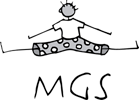If you wake up with sharp heel pain or find your feet aching after exercise, you may be one of the many Australians dealing with plantar fasciitis. This condition, often caused by overuse or poor foot mechanics, can make walking or running uncomfortable. One emerging treatment that’s gaining attention is dry needling for plantar fasciitis.
Our experienced physios offer dry needling as part of a holistic approach to foot and heel pain. But how does it work, and is it the right choice for you?
What Is Plantar Fasciitis?
Plantar fasciitis occurs when the thick band of tissue (the plantar fascia) that runs along the bottom of your foot becomes inflamed or irritated. This often results from repetitive stress, tight calves, flat feet, poor footwear, or increased activity levels.
Symptoms typically include:
- Sharp pain near the heel, especially first thing in the morning
- Aching or burning along the sole of the foot
- Pain that worsens after standing, walking, or running for extended periods
Left untreated, plantar fasciitis can become chronic and affect your ability to stay active.
How Dry Needling Works
Dry needling is a technique used by physiotherapists to release tight or overactive muscle tissue. Unlike acupuncture, which is rooted in traditional Chinese medicine, dry needling targets trigger points—knots or areas of tightness in the muscle that contribute to pain and dysfunction.
For plantar fasciitis, dry needling is often applied to the calf muscles, foot arch, and surrounding structures. The aim is to:
- Reduce tension in the muscles and fascia
- Improve blood flow and healing
- Decrease pain and sensitivity in the affected area
This can provide short-term relief and support longer-term recovery when used alongside stretching, strengthening, and manual therapy.
Benefits of Dry Needling for Plantar Fasciitis
Dry needling isn’t a standalone cure, but it can offer several benefits as part of a broader physiotherapy treatment plan:
- Pain relief: Many people experience a noticeable reduction in heel pain after treatment
- Improved flexibility: Targeting tight muscles can help restore normal foot and ankle movement
- Enhanced recovery: Promotes better circulation and healing in the affected tissues
- Better function: Reducing pain and tension helps improve your overall gait and movement patterns
To learn more about how we combine dry needling with other treatment techniques, visit our page on physiotherapy services.
Is Dry Needling Right for You?
Dry needling can be a helpful option for many people with plantar fasciitis, especially if:
- You’ve had symptoms for several weeks or months
- You have tight calves or foot muscles
- You haven’t responded fully to rest, ice, or massage alone
However, it may not be suitable for everyone. Your physiotherapist will assess your symptoms, foot structure, and movement patterns before recommending the best treatment options. At MGS Physio, we always tailor our approach to your individual needs.
What to Expect During Treatment
If your physiotherapist recommends dry needling, here’s what a typical session might involve:
- Assessment of your foot, ankle, and calf to identify tight or overactive muscles
- Insertion of very fine needles into targeted trigger points
- A brief twitch or cramping sensation, followed by muscle relaxation
- Advice on post-treatment care, such as stretching, hydration, and movement
Most people tolerate dry needling well, and side effects are usually mild—such as local soreness or fatigue.
Combining Dry Needling with Other Treatments
At MGS Physiotherapy, we don’t just treat the symptoms—we address the root cause. That’s why dry needling is often combined with other techniques, including:
- Manual therapy: Hands-on treatment to mobilise joints and fascia
- Stretching and strengthening: Exercises for your calves, arches, and hips
- Footwear advice and taping: To offload the plantar fascia and reduce stress
- Load management: Guidance on training intensity, surfaces, and rest
- Shockwave Therapy: an effective way to help reduce pain and inflammation and promote healing and proliferation of healing cells
This integrated approach ensures more effective and lasting results. You can learn more about our tailored care through our sports physiotherapy service.
Why Choose MGS Physio?
Our team of experienced physiotherapists is passionate about helping active individuals recover from pain and get back to the activities they enjoy. Whether you’re a runner, a busy parent, or someone who’s on their feet all day, we’ll work with you to build a treatment plan that fits your goals and lifestyle.
With clinics in Manly, North Curl Curl, and Mona Vale, we offer a full suite of services—including dry needling, massage, exercise programs, and manual therapy—to support your recovery from plantar fasciitis.
Visit our homepage to learn more about our clinic locations and approach.
Take the First Step Toward Heel Pain Relief
If plantar fasciitis is holding you back, don’t wait for it to settle on its own. Dry needling could be a useful part of your recovery plan, especially when guided by experienced physiotherapists who understand the full picture.
Call now to book your sports physio appointment with MGS Physiotherapy.
CALL NOW TO BOOK YOUR APPOINTMENT
